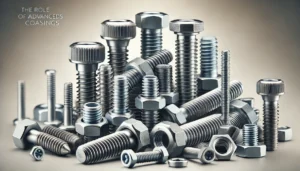Valves are essential parts of machines used in communication systems such as controlling the flow, pressure, or direction of fluids or gases. Unfortunately, their ability to function in those fields is reduced due to their constant exposure to high pressures, extreme temperatures, and contact with corrosive substances. As a result, valves can fail. These malfunctions can be damaging as they can create interruptions in production, pose a risk to safety, or cause advances in technology to be set back. In order to prevent such situations from occurring it is wise to know the reason behind the valve failures and measures which can reduce their frequency.
In this article, I will detail the reasons behind each of the most common common valve malfunctions, the methods which can assist in extending the service life of said parts, and how these measures can help with uninterrupted flow of work.
1. Leakage
Cause: One of the most common valves malfunctions is leakage, which occurs as a result of faulty gaskets and other seals. Other causes include worn or damaged seats and even corrosion of the valve components. Leakage is most likely to occur during high corrosive or high pressure environments.
Solution: In order to minimize leakage, it is recommended to use durable and weatherproof gaskets during the installation. Other measures include inspecting the valve regularly for signs of wear, corrosion, and most importantly whether or not they are tightly sealed. Further reduction of the leakage potential may include installation procedures which utilize the proper amount of torque.
2. Sticking or Jamming
Cause: The term “Sticking” refers to a circumstance when the valve is not able to fully open or close properly allowing in some parts to remain stuck between the two. This frequently occurs owing to dirt, filth or rust deposition on the valve body. Dirty valves can also be caused due to failure of moving components lubrication or if there is excessive damage to the stem and bearings.
Solution: Regular routine cleaning and flushing can eliminate the dirt and the built-up on the valve body. Make sure the lubrication of the moving parts is done using the right grease considering the operating conditions. For a situation that is prone to rusting, consider using valves made of duplex stainless steel or valves with rust resistant coating.
3. Corrosion
Cause: The corrosive wears away chemical structures and makes them weak. This most often occurs with valves located in oil plants, in high sea water and humidity zones. This makes the valves incapable of doing their work.
Solution: Choose the materials that are suited for your application in order to avoid this from happening. Stainless steel, Hastelloy, or Inconel are some good choices that do not easily get corroded. Galvanizing the valves with coatings like PTFE or epoxy can also help increase the lifetime of the valves. Regular inspections of the equipment to note the presence of corrosion assists in preventive maintenance.
4. Cavitation
Cause: Cavitation happens when a significant flow rate is present or when there is a quick change in pressure. This is caused by high flow zones or valves that are rapidly opened and closed and forms NS or cavities. This causes damage to internal valve components since these cavities implode with alarming pressure so within a short span of time.
Solution: A way to reduce the effects of cavitation is to use the. Using it appropriately such that it is designed for the flow and pressure requirements. If there is a high likelihood of cavitation occurring, use materials that are sufficient such as high tensile steel to withstand wear and tear or an anti-cavitation trim.
5. Erosion
Cause: Impingement or velocity abrasion in some cases is caused when high pressure fluid flows containing solid particles such as sand or slurry, which also reduces the life of valves or their trim. The exposure to these actions where particle impact exceeds a certain amount can cause a notable decrease in the structure’s strength.
Solution: Try using valves specially designed for such hostile environments such as ceramic or cement lining those having a hardened structure would do fine. Filters can be put up yard away to catch these abrasive particles before they make way to the valve. Make it a point to conduct routine examinations to identify aging parts with wear and tear.
6. Thermal Expansion
Cause: Thermal expansion in simple terms is the expansion of parts of the same material otherwise dense but under electrical pressure or heat. This disparity can give rise to cracks or create space through which fluids can egress.
Solution: *Consider using Inconel or alloy steel valves for high-temperature applications since it has high thermal stability. It is fundamental to follow the appropriate installation procedures by including sufficient spacing and expansion joints to cope with thermal movement. Additionally, regular checks on temperature changes might aid in avoiding excessive failures in the system.*
7. Incorrect Actuation
Cause: Incorrect Actuation also referred to as obtuse actuation can be defined as an actuative failure of valve control in opening or closing during valve rotation and is frequently in relation to the actuator’s trust, and alignment, connection to an electrical sensor, or actuation torque.
Solution: Oversea the scheduled maintenance for automated control actuators which includes lubricating, tuning, and checking the wiring. For remotely operated systems, confirm that control outputs are true and active. It is important to use suitable actuators for particular valve dimensions and operating conditions for uninterrupted performance.
8. Valve seat damage
Cause: When the seat of the valve is directly in the flow stream, it is highly likely for a valve seat to be subjected to frictional wear from the medium or flow and in turn, if damaged it will evidence through leaks or low sealing capacity control of the system. Damage can be inflicted by debris, high heat, or abrasive materials that come into contact with the valve.
Solution: Diminish the use of ceramic, tungsten carbide or high durability materials for valve seats located within the high wear zones especially within a valve. Another measure is to place a strainer or filter upstream of the valve to minimize debris. This ensures effectiveness especially if damaged seats are periodically checked and replaced.
9. Fatigue Failure
Cause: Vacuum fatigue damage may happen because of repetitive physical e stresses and overtime of vibrations, which cause cracks or fractures on the valve body or its various components. This failure type is usually found in systems with low run-time but, very aggressive cycling or those subjected to very high dynamic loads.
Solution: Use valves whose design is optimized against cyclic loads, for example, those which are made from high strength alloys. Application of dampers or supports decreases the stress caused by vibrations. Looking out for early signs of fatigue such as small cracks enable one to conduct timely maintenance.
Recommendations of Practises to Avoid Failures of Valves.
Regular Maintenance: Set up a timeline to have scheduled maintenance and services done to the valves that includes clean outs, lubrication and parts replacement as necessary.
Correct Assembly: During assembly, the manufacturer’s specifications should be adhered to pertaining to alignment, torque specification and other details.
Choice of Materials: Selecting the right materials and coatings materials and coatings appropriate for the operational environment in terms of pressure, temperature and chemicals which will be exposed to.
System Configuration: Correct selection of valves based on flow rate, flow pressure and the medium itself so as to not experience problems like cavitation or erosion in the system.
Control the Functionality: Using automatic control systems to watch over the state of the valves allows to arrange more effective maintenance and even identify some issues proactively.
Conclusion
In an industrial context, valve troubles are serious, but by carrying out proper assessments and writing a plan, it is possible to reduce chances of such failure. It is also important to find and reduce problems such as leakage, corrosion or even cavitation to avoid system malfunctions in the future. This means that companies must use good valves, change them on time and when needed, and design the systems appropriately to the ambient standards of operation.










